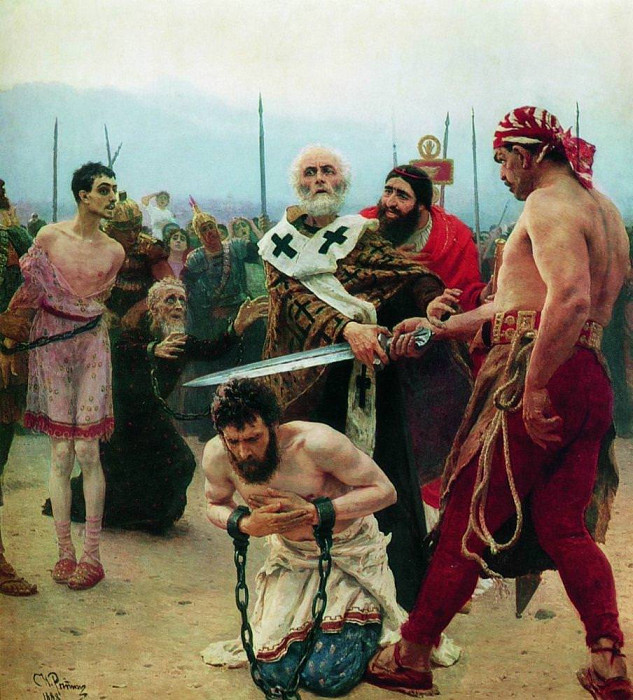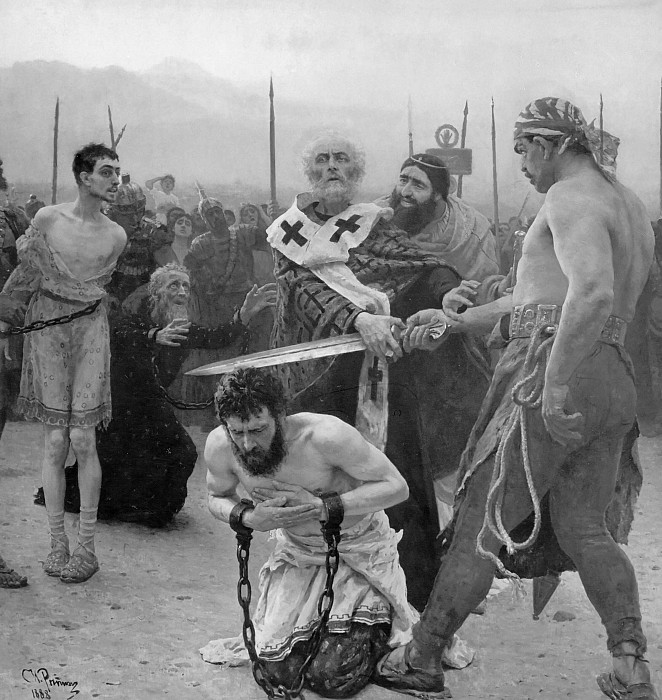

Ilya Repin – St. Nicholas Delivers Three Unjustly Condemned Men from Death
1888.
Location: State Russian Museum, St. Petersburg (Государственный Русский Музей).
На эту операцию может потребоваться несколько секунд.
Информация появится в новом окне,
если открытие новых окон не запрещено в настройках вашего браузера.
Для работы с коллекциями – пожалуйста, войдите в аккаунт (open in new window).
Поделиться ссылкой в соцсетях:
COMMENTS: 1 Ответы
Сильно!
You cannot comment Why?
In this dramatic painting, St. Nicholas Delivers Three Unjustly Condemned Men from Death, a bishop, identified as Saint Nicholas, intervenes to save three men sentenced to execution. Saint Nicholas, clad in his religious vestments, stands prominently in the center, his face alight with righteous conviction. He is depicted holding a sword, a symbol of his authority and the power he wields in this moment.
Before him kneels one of the condemned men, his hands bound by heavy chains, his head bowed in prayer or resignation. To the left, another man stands, also chained, his gaze fixed on the bishop with a mix of hope and terror. A third condemned man is not as clearly visible but is implied to be part of the group.
Surrounding them is a crowd of onlookers, some appearing sympathetic, while others, possibly soldiers or officials, stand sternly, representing the authority that has condemned these men. The background shows a desolate landscape with a muted sky, contributing to the somber and intense atmosphere of the scene.
The subtext of this painting is profound, centering on themes of divine intervention, justice, and mercy. Saint Nicholas represents the triumph of good over injustice, his actions highlighting the responsibility of those in power to uphold moral righteousness. The painting also speaks to the power of faith and the belief that even in the face of unjust condemnation, salvation is possible through divine grace and the courage of those who champion the truth. The stark contrast between the powerful religious figure and the vulnerable condemned men underscores the vulnerability of the innocent and the potential for redemption and deliverance. The scene evokes a sense of moral authority and the idea that true justice can prevail against oppressive forces.